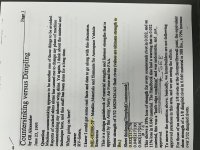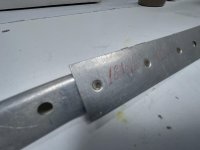claycookiemonster
Well Known Member
Refresher: AN 426 are the flush head rivets, and AN 470 are button heads.
Not considering the appearance or drag coefficients of either. I could also believe that there may be a slight difference between dimpled versus countersunk 426's. Not talking about that either, for now.
But if strength is all that matters, which would you use? It looks to me like the button headed 470's may have a greater area against the SURFACE of the metal being riveted, so their strength would be more in compression. Dimpling for 426's would seem to sacrifice some direct compression strength, but perhaps make up for in in the shear resistance the dimples provide against each other.
Hey, football is over. I've got to think about something.
Not considering the appearance or drag coefficients of either. I could also believe that there may be a slight difference between dimpled versus countersunk 426's. Not talking about that either, for now.
But if strength is all that matters, which would you use? It looks to me like the button headed 470's may have a greater area against the SURFACE of the metal being riveted, so their strength would be more in compression. Dimpling for 426's would seem to sacrifice some direct compression strength, but perhaps make up for in in the shear resistance the dimples provide against each other.
Hey, football is over. I've got to think about something.







